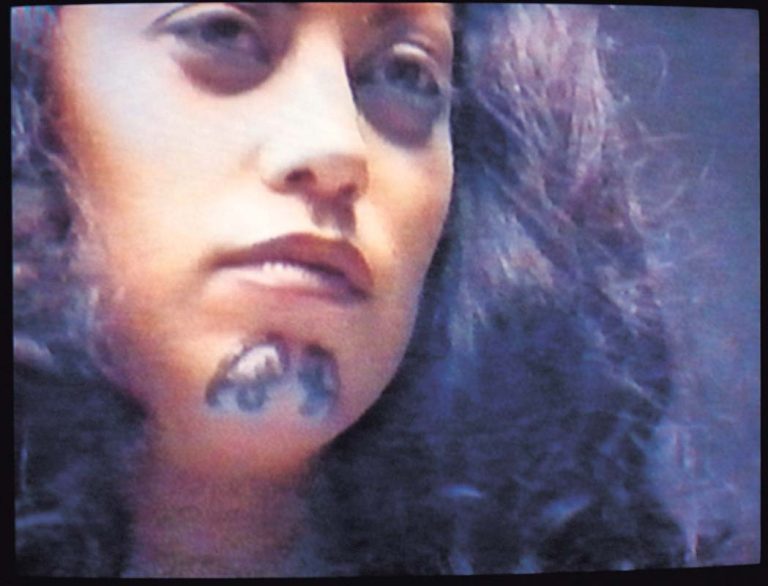We acknowledge the Traditional Owners of the land on which the Queensland Art Gallery | Gallery of Modern Art stands and recognise the creative contribution First Australians make to the art and culture of this country.

Lisa Reihana / Ngā Puhi, Ngāi Tu, Ngāti Hine, Aotearoa New Zealand b.1964 / Digital Marae (‘Let there be light’ still) 2001 / DVD, single-channel video, exhibited on monitor, looped, colour, sound, 3:30 minutes, 4:3, ed. 2/5 / Purchased 2002 / Collection: Queensland Art Gallery | Gallery of Modern Art / © Lisa Reihana
Lisa ReihanaDigital Marae 2001
Not Currently on Display
Lisa Reihana is interested in foundations — building with imaginary blocks or with stacked television monitors, she creates works that have the imposing presence of architecture. With Digital Marae, Reihana presents a dramatically charged space built through a series of photographs mounted on aluminium, and a DVD in which the unfolding narrative of Maori mythology is powerfully evoked. Throughout her practice Lisa Reihana has engaged and constructed her own virtual marae (meeting place).1
The marae is a sanctuary, a place where people come together to articulate their commonalities and debate their differences. This space is highly structured and functions through complex protocols. Within it, the wharenui (the physical structure) represents the ancestor’s body — the central roof beam its backbone, and the rafters its ribs. The poupou that line the sides of the wharenui are individual ancestors.
These different architectural components disseminate fundamental genealogical knowledge and create an intense presence from which those affiliated to the meeting house can gain a profound sense of belonging. By creating a virtual marae, Reihana encompasses these qualities and dynamics without being constrained by geographical location and possibly daunting codes of behaviour.
Photographic images of five women constitute an imposing presence in Digital Marae: Hinepukohurangi, Kurangaituku, Mahuika, Marakihau, Hinewai are the poupou of Reihana’s marae and are the ‘synthesised future vision of whakairo (carving)’.2 Each encapsulates a Maori tribal story. A strong component of Reihana’s practice is to convey the importance of matriarchy within Maori culture. The individual carvings in the wharenui have, historically, mostly represented male ancestors and with Digital Marae, Reihana was particularly keen to focus on women’s presence.
Endnotes:
1. Maud Page, ‘Interdigitating Reihanamations: Lisa Reihana’s video weavings’, Art AsiaPacific, no. 21, 1999, pp.40-3.
2. Lisa Reihana, email to Maud Page, March 2002.
Lisa Reihana’s practice incorporates performance, photography, installation and moving-image works, and is inspired by the culture and history of Māori and South Pacific Islander peoples. Her work in APT9, in Pursuit of Venus [infected] 2015–17 is a panoramic video that reimagines the scenes in a French wallpaper from 1804–05, not long after Captain Cook’s voyages in the Pacific.
Indigenous peoples of the Pacific are depicted as ‘noble savages’, dancing and celebrating in a lush landscape of exotic flora and fauna. The clothing and poses of the figures in the wallpaper are not authentic, but were inspired by the murals of ancient Rome, a style that was popular at the time.